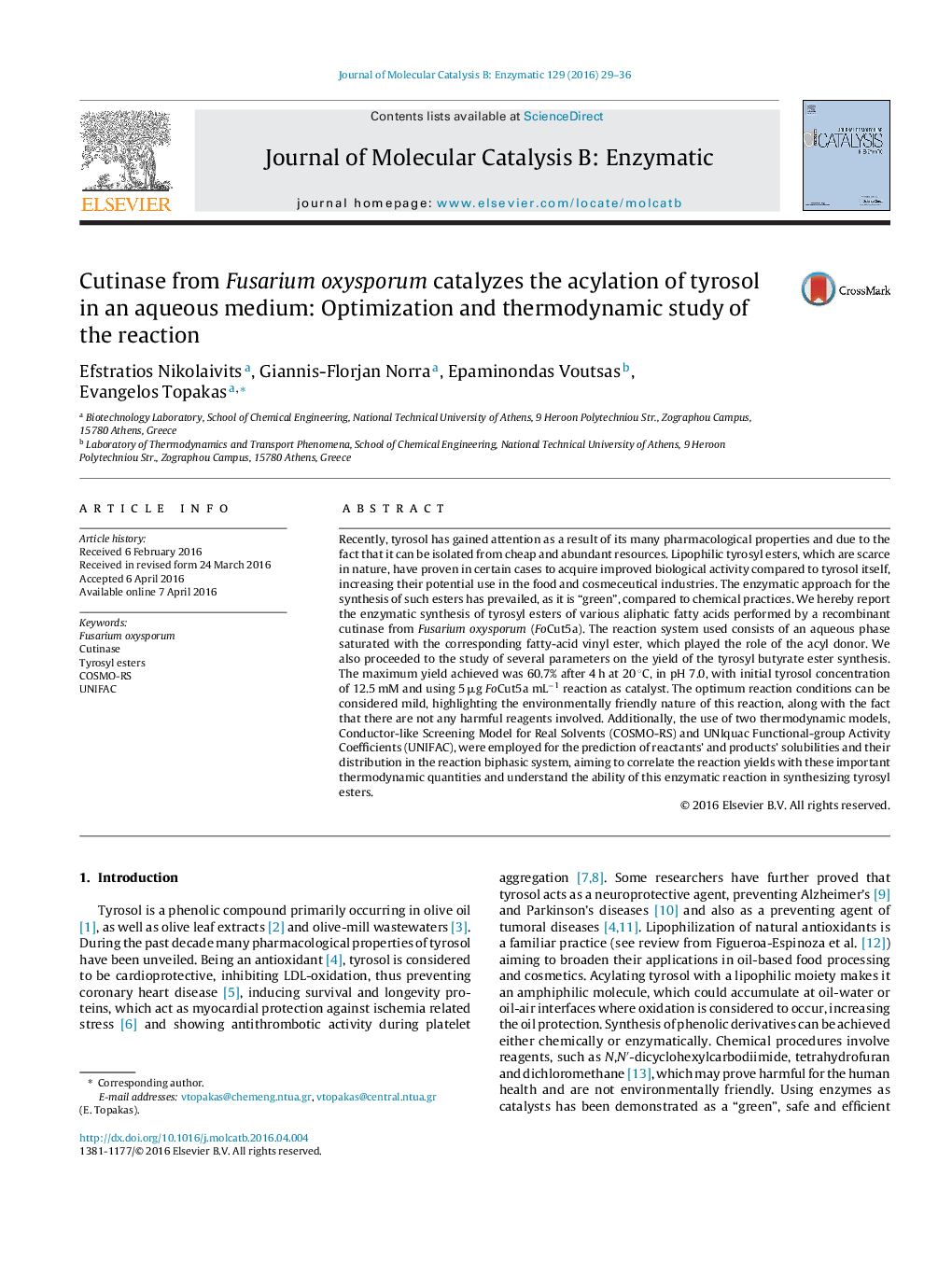| Article ID | Journal | Published Year | Pages | File Type |
|---|---|---|---|---|
| 69420 | Journal of Molecular Catalysis B: Enzymatic | 2016 | 8 Pages |
•FoCut5a cutinase is capable of synthesizing tyrosyl esters in an aqueous medium.•A biphasic reaction system was optimized for optimal product yield.•Maximum conversion yield of 61% was achieved for the production of tyrosyl butyrate.•Optimal reaction conditions were pH 7, 12.5 mM tyrosol, 5 μgenz mL−1 for 4 h at 20 °C.•Reactant/product solubility and distribution in the biphasic system were predicted.
Recently, tyrosol has gained attention as a result of its many pharmacological properties and due to the fact that it can be isolated from cheap and abundant resources. Lipophilic tyrosyl esters, which are scarce in nature, have proven in certain cases to acquire improved biological activity compared to tyrosol itself, increasing their potential use in the food and cosmeceutical industries. The enzymatic approach for the synthesis of such esters has prevailed, as it is “green”, compared to chemical practices. We hereby report the enzymatic synthesis of tyrosyl esters of various aliphatic fatty acids performed by a recombinant cutinase from Fusarium oxysporum (FoCut5a). The reaction system used consists of an aqueous phase saturated with the corresponding fatty-acid vinyl ester, which played the role of the acyl donor. We also proceeded to the study of several parameters on the yield of the tyrosyl butyrate ester synthesis. The maximum yield achieved was 60.7% after 4 h at 20 °C, in pH 7.0, with initial tyrosol concentration of 12.5 mM and using 5 μg FoCut5a mL−1 reaction as catalyst. The optimum reaction conditions can be considered mild, highlighting the environmentally friendly nature of this reaction, along with the fact that there are not any harmful reagents involved. Additionally, the use of two thermodynamic models, Conductor-like Screening Model for Real Solvents (COSMO-RS) and UNIquac Functional-group Activity Coefficients (UNIFAC), were employed for the prediction of reactants’ and products’ solubilities and their distribution in the reaction biphasic system, aiming to correlate the reaction yields with these important thermodynamic quantities and understand the ability of this enzymatic reaction in synthesizing tyrosyl esters.
Graphical abstractFigure optionsDownload full-size imageDownload as PowerPoint slide
